In this post we discuss progress made on the 3 principal PCB boards we've been working on for our upcoming Review Units.
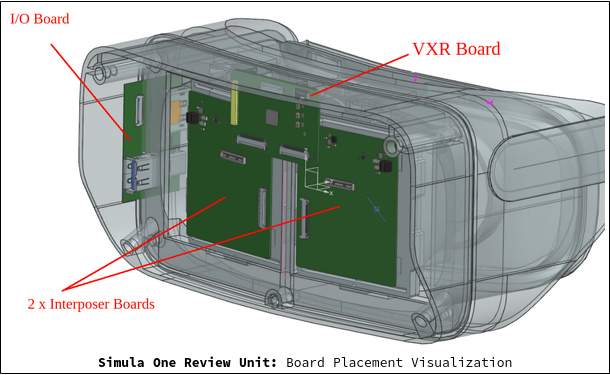
1 High-Level Overview of our Boards
Here's a high-level overview of how these boards connect with each other:
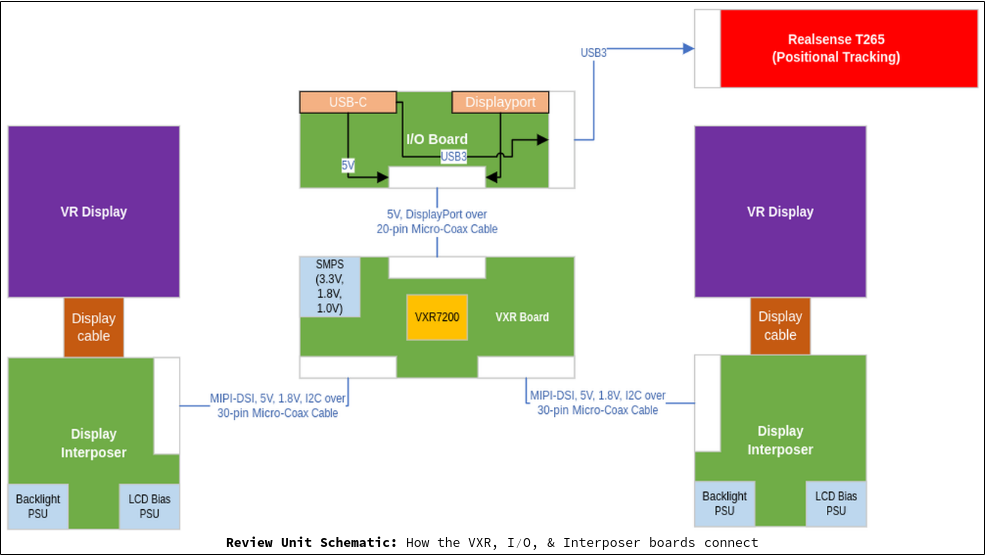
In particular, we have
- VXR Board. This is the board which splits a DisplayPort link into two MIPI-DSI links, required by our VR displays.
- Display Interposers. These boards connect our VR displays to the VXR board (and cameras to the FPGA board).
- I/O Board. This is a simple I/O board which connects our compute unit to our VXR board, as well as the Intel RealSense (for positional tracking).
We are mostly done with all of these components (details explained below); however, we are stuck waiting until at least mid June for the Micro-Coax Cables (40 Interposer cables + 20 VXR cables) which connect these boards together. We are currently looking for alternative suppliers to speed this up. Nevertheless, it's these cables which so far are the surprising bottleneck for our Review Unit release schedule.
2 VXR Updates
As discussed in recent posts, we are placing a Synaptics VXR7200 between our onboard computer and our two VR displays (to convert a DisplayPort lane to two MIPI-DSI streams).
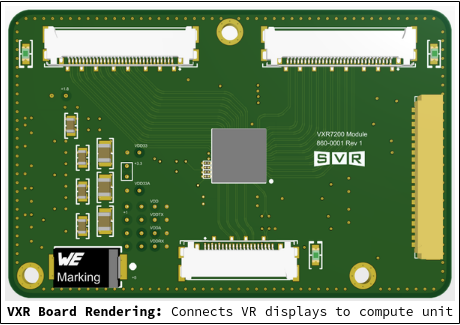
- Manufacturer approved. We recently submitted our designs to Synaptics and our PCB manufacturer. We received confirmation from the latter that our board is manufacturable, but are still waiting for feedback from Synaptics on our design.
- Ordered 14 boards. We went ahead and ordered 14 boards ahead of hearing feedback from Synaptics. There's roughly a 2-week leadtime on these boards (small in comparison to many other things), so if there ends up being changes to the design, we're not in too terrible of a spot.
3 Interposer
Our headset design requires interposers to mediate the connection between the VR Displays and the VXR board. This is basically because the VR displays' flex cable is horizontally inflexible.
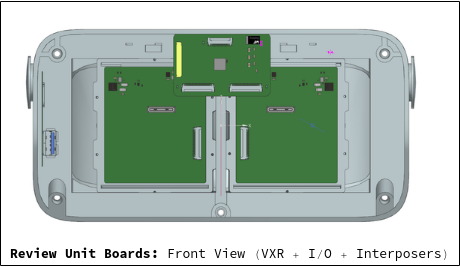
As shown in mockup, each interposer board is laid directly behind the VR display (allowing the display flex cable to curl back vertically into its connector position. Because the display flex cable is so inflexible, getting the display connection in the right location on the Interposer was somewhat tricky. For that we actually used a physical mockup:
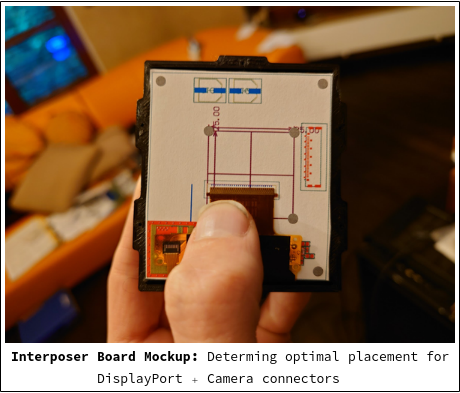
We are expected to be finished with the Interposer board within a few days. Fortunately, lead times for the Interposer boards are likely to be even shorter than 2 weeks.
4 Connector Board
The Simula One's compute unit will not be loose, but be fitted snugly to the back of the headset (and detachable). Nevertheless, our Review Unit compute units will be wire-connected to a loose compute unit. This short-term compromise allows us to get a fully functioning headset out as fast as possible.
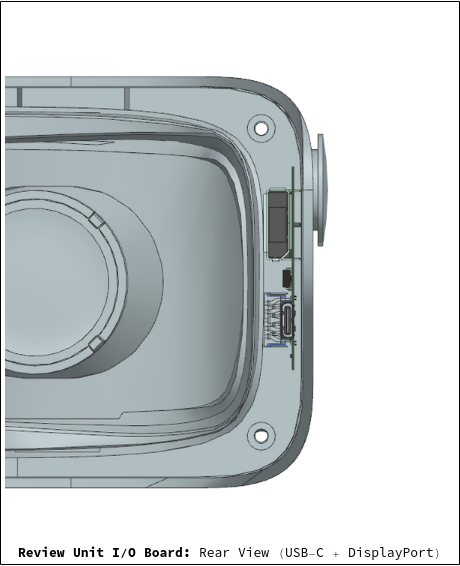
For this reason we had to make an I/O board on the side of the headset which expose USB-C & DisplayPort ports for the compute unit to wire into:
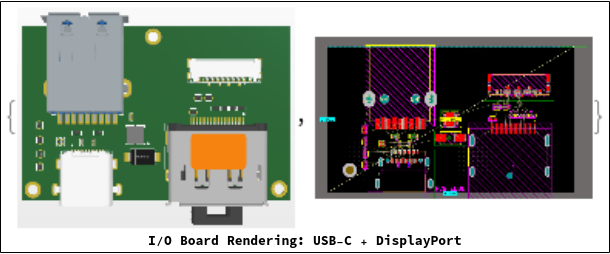
As shown in our high-level schematic, our connector board allows the Intel RealSense tracker to connect from the front of our headset to the compute unit (via USB-3). The I/O board also connects the computer to the VXR board (which connects to the interposers, which are connected to the displays).